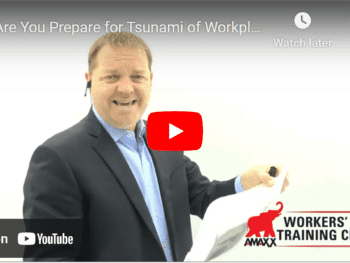
Attracting and keeping younger talent is imperative to maintain and grow an organization. Millennials, those born between the early 1980s and early 2000s are quickly overtaking the workforce. Therefore, it behooves companies to take steps that can make their organizations more attractive to these younger workers.
Many of the strategies that help prevent injuries and reduce workers’ compensation costs are the very same that will help companies get the best workers to position themselves well for the future.
Click Link to Access Free PDF Download
“The 5Cs to Taking a Bulletproof Injured Worker Recorded Statement”
The Culture
Research shows millennials are highly focused on making a difference in society, perhaps even more than on making money. They seek employers who share their ideals. Some of the ways employers can make their cultures more millennial-friendly include the following.
- Offer Mentoring. Mentoring young employees is an effective way to provide support, as well as provide an open and inviting culture for new ideas and opportunities for organizational growth.
- Soft skills — the ability to empathize and express compassion — are imperative for an effective injury management program. Employees who feel their employers are genuinely concerned about their wellbeing are more likely to engage in the recovery process. Studies show these workers heal and return to work sooner than employees who feel they are in conflict with the employer. In the same way, millennials are more likely to be attracted to, and want to stay with organizations that have a culture of caring.
- Positive communication. Replacing negative terminology with positive messages may seem insignificant, but it can have a tremendous impact — on injured workers as well as millennials. For example, instead of telling an injured worker his claim was denied, rewording it to say the claim was not approved carries a different message — especially if the person saying it follows up with ways the worker can be treated; such as through general health insurance. Delivering ‘negative’ news to an employee should be worded in a way that still shows respect and caring for the worker.
- Emphasis on safety. Employers want to prevent injuries; workers want to avoid getting hurt. Since the goals are the same for both, the idea of safety should be presented in a way that shows concern. Instead of dictating rules to workers and chastising them for not adhering to them, employers should communicate the reasons for safety rules with the overlying message that the company wants to protect its workers.
- Simplify the message. If a new product or procedure is going into effect, it should be explained in as simple a manner as possible. Instead of inundating workers with pages and pages of unnecessary information, boil it down to the basics: what it is, why it is being implemented, and how and what changes it requires. Creating a simple document or brochure and holding a general meeting to explain it and allow for questions will help employees understand it better and make them feel part of the process.
Technology
Injured workers need the proper tools to recover and return to function. That includes access to appropriate medical care and the right information to help them engage in their own recoveries.
Prospective employees also need to know the right tools are available to them. Younger people have grown up with computers, smartphones, and tablets and used them throughout their educational and social lives. Companies seeking to hire and retain the best of millennials need to keep this in mind and update their systems to the extent possible.
But a complete overhaul of a company’s systems may not be feasible. Instead of completely revamping the company with the latest and greatest techno toys, companies should work with their employees and see where and how they can use new technologies to improve their systems — and retain younger workers.
Automation and artificial intelligence should not be viewed as replacements for workers. Instead, they can help with some of the more rote aspects of a person’s job, allowing the worker to spend time on more important aspects.
Smartphones and tablets may help get the job done better and faster. Rather than purchasing these for all employees, it might be possible to allow workers to use their own devices and providing them with specific apps, for example.
Conclusion
Working with, rather than against injured workers and providing them with quick and proper medical care leads to faster and better outcomes. Similarly, showing compassion for workers and providing them with the tools that best help them get their jobs done will help organizations attract and retain the best of the next generation of workers.

Author Michael Stack, CEO Amaxx LLC. He is an expert in workers’ compensation cost containment systems and helps employers reduce their workers’ comp costs by 20% to 50%. He works as a consultant to large and mid-market clients, is a co-author of Your Ultimate Guide To Mastering Workers Comp Costs, a comprehensive step-by-step manual of cost containment strategies based on hands-on field experience, and is founder & lead trainer of Amaxx Workers’ Comp Training Center.
Contact: mstack@reduceyourworkerscomp.com.
Workers’ Comp Roundup Blog: https://blog.reduceyourworkerscomp.com/
©2018 Amaxx LLC. All rights reserved under International Copyright Law.
Do not use this information without independent verification. All state laws vary. You should consult with your insurance broker, attorney, or qualified professional.










